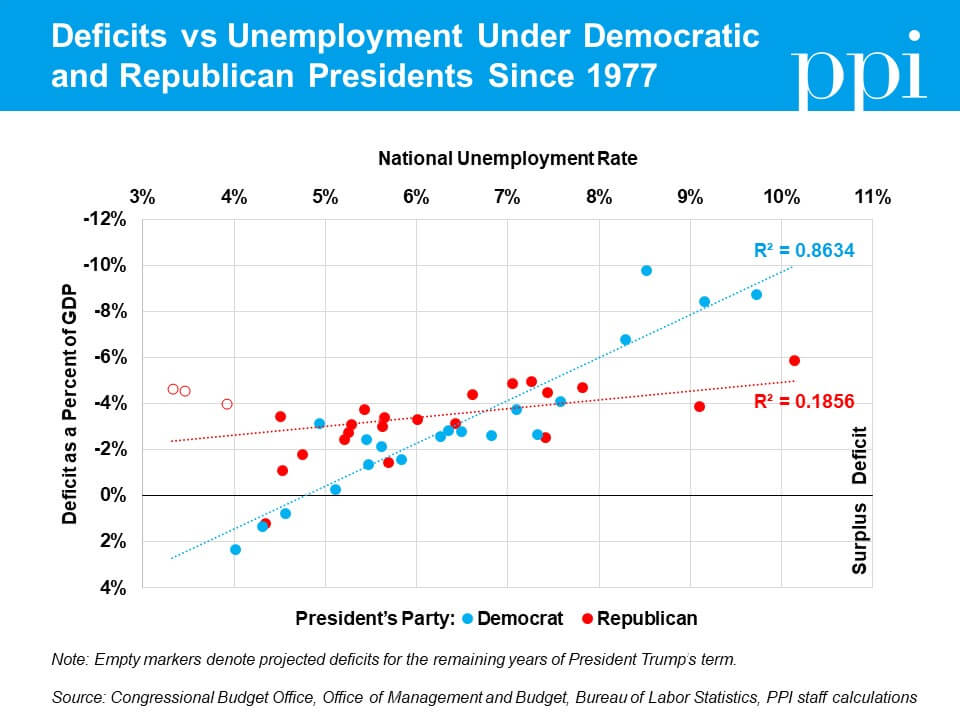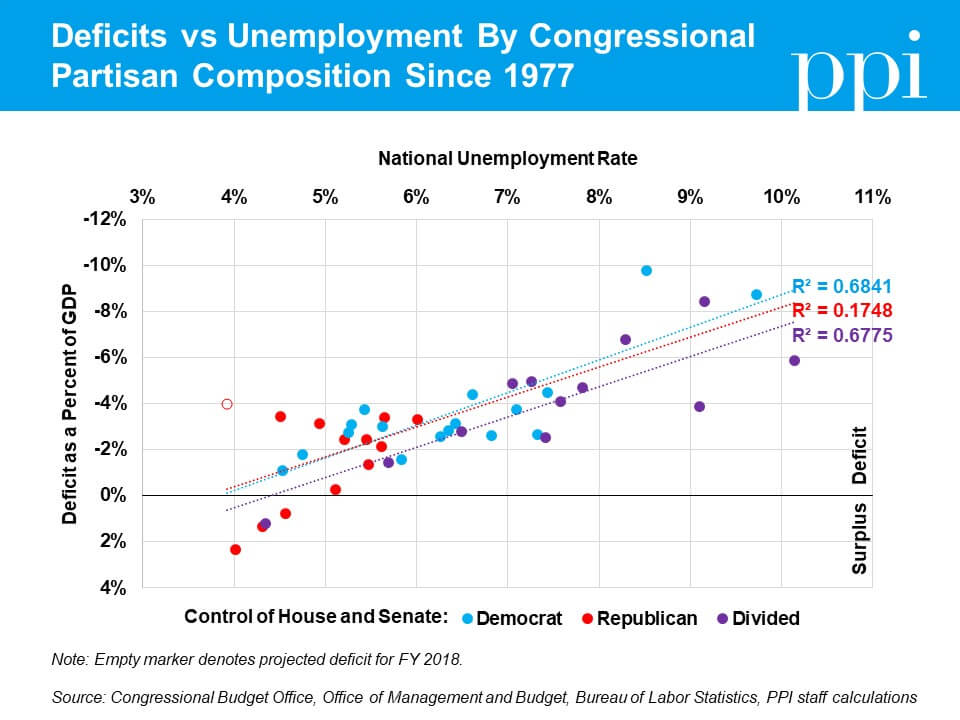Article I, Section 8 of the Constitution sets out Congress’s job description on international trade, empowering it “to lay and collect . . . duties” and “to regulate commerce with foreign nations.”
For the past two years, Congress hasn’t been doing its job. Instead, it’s stood by while President Trump has hijacked its constitutional trade powers and recklessly imposed damaging tariffs. Trump’s abuse of trade powers delegated to him by Congress is destroying U.S. jobs, hammering large and small businesses, increasing prices for American families, and prompting foreign retaliation against American manufactured and farm exports.
It’s time for Congress to start doing its job on trade. A key step is enacting the Trade Authority Protection (TAP) Act. This balanced legislation would rein in Trump’s abuse of delegated trade powers, require greater presidential accountability, and enable Congress to nullify irresponsible tariffs and trade restrictions.
THE CHALLENGE: PRESIDENT TRUMP’S ABUSE OF DELEGATED POWERS ON TARIFFS AND TRADE IS HARMING AMERICAN BUSINESSES, WORKERS, AND CONSUMERS.
President Trump’s reckless tariffs are damaging America’s economy and U.S. trade relations.
From Maine lobstermen(1) to West Coast dockworkers (2), and for countless workers, farmers, manufacturers (3), and consumers nationwide, President Trump’s tariffs—and resulting foreign retaliation—are causing serious and growing economic pain. Workers are losing jobs (4), manufacturing is being offshored (5), and farmers worry about rotting crops and lost export markets (6). America’s families are paying more for everything from washers and dryers to couches, clothing, canned beer, Christmas lights, and car insurance, while higher costs for infrastructure projects are straining local budgets (7). And unfocused tariffs against allies make it harder for America to mount joint action against serious trade threats, especially China’s technology theft and state subsidies (8).
In taking these irresponsible actions, the President is abusing trade powers delegated to him by Congress. Congress has done nothing to rein in Trump’s reckless trade wars and his hijacking of its constitutional trade authority.
Past presidents have prudently used trade powers delegated by Congress.
The Constitution provides Congress with primary authority over tariffs and foreign trade (9). For the first 145 years under the Constitution, Congress employed these powers directly through legislation. After the disastrous Smoot-Hawley tariffs deepened the Great Depression, Congress wisely adopted a different approach (10).
Beginning with the Reciprocal Trade Agreement Act of 1934,11 Congress increasingly delegated authority to the president to negotiate trade deals, adjust tariffs, and enforce U.S. trade rights (12). In effect, while retaining its constitutional trade powers and oversight authority, Congress has “subcontracted” key trade functions to the president.
These delegations make sense under America’s constitutional system. A 535-member Congress isn’t particularly well equipped to set tariffs, bargain on trade agreements, or enforce trade rules.
Presidents of both parties have largely exercised delegated trade powers responsibly, working constructively with Congress to expand trade (13). When President Kennedy signed the Trade Expansion Act of 1962—which authorized the president to impose trade restrictions to address “national security” threats—he emphasized building alliances and reducing trade barriers, and warned against “stagnating behind tariff walls” (14).
President Trump has abused delegated tariff and trade powers.
Unlike his bipartisan predecessors,15 Donald Trump hasn’t been a prudent steward of delegated trade powers. Rather, he’s cynically abused delegated authority, believing, for example, that simply invoking “national security” enables him to take virtually any action to restrict trade (16).
In imposing tariffs on imports of steel and aluminum, President Trump has used “national security” as little more than a pretext. Long-time trade experts note that the Administration’s investigations in these cases were “extremely non-transparent” and that its security and economic analyses were “embarrassingly feeble” and “absurd” (17).
Since adopting the metals tariffs, the Administration has implemented an exemption process that’s been chaotic, opaque, and lacking essential due process—especially for thousands of small businesses harmed by the tariffs. Applicants rarely get relief. The process seems designed, instead, to preserve tariffs for the Administration’s well-connected cronies in the primary metals sector (18).
Trump is doubling down on abusive “national security” cases, pushing for national security duties on auto imports from U.S. allies, despite near-universal opposition. The Administration’s public hearing in this investigation has been called a “show trial” intended to justify the President’s pre-ordained auto tariffs (19).
The Administration is abusing other delegated trade authorities. In a vital “Section 301” investigation of China’s theft of U.S. hi-tech, Trump initially sought to change China’s conduct by imposing unilateral tariffs on $50 billion in Chinese imports—based on faulty advice that China wouldn’t retaliate. When China retaliated, Trump impulsively increased the tariffed imports by another $200 billion and has threatened duties on all $500 billion in U.S. imports from China (20).
Trump’s irresponsible actions regarding China appear to be driven more by whim than any real strategy. It’s no surprise that his unfocused tariffs haven’t caused China to budge (21).
THE GOAL: REIGN IN PRESIDENT TRUMP’S ABUSE OF DELEGATED POWERS WHILE PRESERVING A RESPONSIBLE BALANCE BETWEEN CONGRESS AND THE PRESIDENT ON TRADE
President Trump is seriously abusing trade powers “subcontracted” to him by Congress. Accordingly, like any responsible general contractor, Congress must step in and better oversee how the president uses delegated trade powers.
Most importantly, Congress needs an effective procedure for stopping reckless trade restrictions by the president—and reversing damaging tariffs on hundreds of billions in imports that Trump has already enacted. Any new mechanism should apply to the full range of trade restrictions—including tariffs, quotas, and import prohibitions—and to the full list of laws that authorize the president to restrict trade.
At the same time, Congress shouldn’t return to the role of setting tariffs, negotiating trade deals, or enforcing trade rules. And, the president must still have authority to take initiative to restrict trade for legitimate reasons, subject to effective congressional oversight.
THE SOLUTION: ENACT THE TRADE AUTHORITY PROTECTION ACT
The bipartisan Trade Authority Protection Act would establish a process to enable Congress to evaluate and, if necessary nullify, the president’s use of trade powers delegated by Congress. (The TAP Act was introduced in May 2018 by Reps. Ron Kind (D-WI), Gregory Meeks (D-NY), Ralph Norman (R-SC) and Charles Dent (R-PA)) (22).
Under the TAP Act, 60 days before any “congressionally delegated trade action” could go into effect, the president would be required to submit a report to Congress on the proposed action. The report would describe the proposed action and its economic impacts, including the impacts of potential foreign retaliation. The Act would also require the Government Accountability Office—the investigative arm of Congress—to report on whether the proposed action complies with applicable law.
The TAP Act defines “congressionally delegated trade actions” broadly, to include tariffs, quotas, and import prohibitions under a range of laws that empower the President to restrict trade (23).
The Act would establish a procedure—like the Congressional Review Act (24) process for reviewing major regulations—to enable Congress to nullify the President’s proposed trade action. To do so, Congress would use an expedited process to pass a resolution disapproving the President’s proposed action within the 60-day review period.
The TAP Act would also require, in the first year after any trade action takes effect, that the U.S. International Trade Commission conduct a comprehensive assessment for Congress of the economic effects of the action on U.S. producers and consumers.
Finally, since the TAP Act was introduced in May 2018, President Trump has used delegated powers to impose reckless and damaging tariffs on hundreds of billions of dollars of imports, often using highly questionable legal and economic justifications. To assure these past actions are fully evaluated and reviewed by Congress, it’s vital that the original TAP Act be amended to assure that its reporting and nullification requirements apply retroactively to past Administration actions.
ENDNOTES
1 Shawn Donnan, Even Lobsters Can’t Escape Trump’s Trade War, Bloomberg, Nov. 7, 2018, https://www.bloomberg.com/news/features/2018-11-07/even-lobsters-can-t-escape-trump-s-trade-war?cmpid=socialflow-twitter-businessweek&utm_source=twitter&utm_content=businessweek&utm_medium=social&utm_campaign=socialflow-organic.
2 Jeff Stein, ‘People are worried and people are scared.’ These workers are hurt by Trump’s trade war, but ineligible for his bailout, Washington Post, Oct. 24, 2018, https://www.washingtonpost.com/business/economy/hurt-by-trumps-trade-war-ineligible-for-a-bailout/2018/10/24/7f30d866-ce67-11e8-a360-85875bac0b1f_story.html?utm_term=.5d8bc2ddefd.
3 Keith Naughton and Joe Deaux, Ford’s Hinrichs says Trump tariffs make U.S. steel costliest in the world, Automotive News, Oct. 22, 2018, https://www.autonews.com/article/20181022/OEM01/181029915/trump-tariffs-ford-hinrichs-stel; Rick Barrett, As tariffs continue, panic begins to sink in among Wisconsin manufacturers, Journal Sentinel, Oct. 22, 2018, https://www.jsonline.com/story/money/2018/10/22/tariffs-boats-cribs-bourbon-more-rattle-wisonsin-manufacturers/1686445002/.
4 Trump Trade War—Mid Continent Nail facing closure over tariffs, Steel News, Oct. 16, 2018, https://steelguru.com/steel/trump-trade-war-mid-continent-nail-facing-closure-over-tariffs/523502.
5 Bob Bryan, A Chicago-area manufacturer is laying off 153 workers and moving to Mexico partly because of Trump’s tariffs, Business Insider, Aug. 15, 2018, https://www.businessinsider.com/trump-tariffs-trade-war-causes-150-layoffs-at-chicago-manufacturer-2018-8.
6 Binyamin Appelbaum, Their Soybeans Piling Up, Farmers Hope Trade War Ends Before Beans Rot, New York Times, Nov. 5, 2018, https://www.nytimes.com/2018/11/05/business/soybeans-farmers-trade-war.html#click=https://t.co/iTW7QnQWbT.
7 Ed Gerwin, The ‘Trump Trade Tax’ Strikes Out America’s Baseball Fans, Progressive Policy Institute, Jul. 17, 2018, https://www.progressivepolicy.org/blog/the-trump-trade-tax-strikes-out-americas-baseball-fan//; Doug Palmer, Trump’s tariffs put pressure on insurance companies and premiums, Politico Morning Trade, Nov. 5, 2018, https://www.politico.com/newsletters/morning-trade/2018/11/05/trumps-tariffs-put-pressure-on-insurance-companies-and-premiums-400272; Infrastructure Construction Projects Stalled on Trump Tariffs, Yahoo, Jul. 18, 2018, https://www.forconstructionpros.com/business/news/21014043/infrastructure-construction-projects-stalled-on-trump-tariffs.
8 Ed Gerwin, Confronting China’s Threat to Open Trade, Progressive Policy Institute, Jun. 20, 2018, https://www.progressivepolicy.org/publications/confronting-chinas-threat-to-open-trade/.
9 U.S. Constitution, Art. I, Sec. 8, https://www.law.cornell.edu/constitution/articlei.
10 Bill Krist, Did the Smoot-Hawley Tariff Cause the Great Depression? America’s Trade Policy, Washington International Trade Association, Jun. 16, 2014, https://americastradepolicy.com/did-the-smoot-hawley-tariff-cause-the-great-depression/#.W-xJ3y2ZOCQ.
11 U.S. House of Representatives, Historical Highlights: The Reciprocal Trade Agreements Act of 1943, https://history.house.gov/HistoricalHighlight/Detail/36918.
12 Office of the U.S. Trade Representative, Eighty Years After the Reciprocal Trade Agreements Act, Tradewinds, Jun. 2014, https://ustr.gov/about-us/policy-offices/press-office/blog/2014/June/Eighty-years-of-the-Reciprocal-Trade-Agreements-Act.
13 Rep. Ron Kind, Congress must defend role in international trade, The Hill, Jun. 7, 2018, https://thehill.com/blogs/congress-blog/economy-budget/391230-congress-must-defend-role-in-international-trade.
14 John F. Kennedy, Remarks Upon Signing the Trade Expansion Act, Oct. 11, 1962,
https://www.presidency.ucsb.edu/documents/remarks-upon-signing-the-trade-expansion-act.
15 Previous presidents, for example, responsibly limited their use of “national security” trade powers to matters that raise legitimate security concerns. David Wassel, Section 232: A splendid little trade war, The Hill, Mar. 17, 2018, https://thehill.com/opinion/finance/378290-section-232-a-splendid-little-trade-war.
16 Paul Krugman, Trump’s Manchurian Trade Policy, New York Times, May 28, 2018, https://www.nytimes.com/2018/05/28/opinion/trump-china-trade-policy.html; It’s telling that President Trump often ignores the pretext of “national security,” and admits that the real purpose of his purported security tariffs is to provide leverage against trade partners on other trade priorities. Michael C. Bender, Rebecca Ballhaus, Peter Nicholas, and Alex Leary, Trump Steps Up Attacks on Fed Chairman Jerome Powell, Wall Street Journal, Oct. 12, 2018, https://www.wsj.com/articles/trump-steps-up-attacks-on-fed-chairman-jerome-powell-1540338090?mod=hp_lead_pos.
17 Chad P. Bown, Trump has announced massive aluminum and steel tariffs, Here are 5 things you need to know. Washington Post, Mar. 3, 2018, https://www.washingtonpost.com/news/monkey-cage/wp/2018/03/01/trump-has-announced-massive-aluminum-and-steel-tariffs-here-are-5-things-you-need-to-know/?utm_term=.c88a87214dda; Phil Levy, The Commerce Department Makes A Feeble National Security Plea For Steel Protection, Forbes, Feb. 16, 2018, https://www.forbes.com/sites/phillevy/2018/02/16/the-commerce-departments-feeble-national-security-plea-for-steel-protection/#40bbede842dc.
18 Megan Keller, Commerce Department IG to audit Trump’s tariff exemptions, The Hill, Nov. 1, 2018, https://thehill.com/policy/finance/414193-commerce-department-inspector-general-audits-tariff-exemption-process; Ed Gerwin, Off-the-rails trade policy shows how America loses under Trump, The Hill, Sept. 18, 2018, https://thehill.com/opinion/finance/407179-off-the-rails-trade-war-shows-how-america-loses-under-trump.
19 Ana Swanson, On Trump’s Car Tariffs, Companies are United in Dissent, New York Times, Jul. 19, 2018, https://www.nytimes.com/2018/07/19/us/politics/trump-car-import-tariffs.html; Jennifer Jacobs and Jenny Leonard, U.S. Car-Import Probe Advances as Trump Plans Trade Meeting, Bloomberg, Nov. 12, 2018, https://www.bloomberg.com/news/articles/2018-11-12/u-s-car-import-probe-advances-as-trump-plans-trade-team-meeting.
20 Louis Nelson, Victoria Guida, and Adam Behsudi, Trump threatens tariffs on all $500 billion worth of Chinese imports, Politico, Jul. 20. 2018, https://www.politico.com/story/2018/07/20/trump-china-tariffs-734938.
21 Anna Fifield, China’s trade surplus with the U.S. hit a record $34.1 billion in September amid trade war, Washington Post, Oct. 12, 2018, https://www.washingtonpost.com/world/chinas-trade-surplus-with-the-us-hit-a-record-341-billion-in-september-amid-trade-war/2018/10/12/acdb7412-cdd9-11e8-a360-85875bac0b1f_story.html?utm_term=.f9d7beaa6bda.
22 Trade Authority Protection Act, H.R. 5760, 115th Cong., 2nd Sess., https://www.congress.gov/bill/115th-congress/house-bill/5760/text; Congressman Ron Kind, Bipartisan Group of Lawmakers Call for Implementation of Congressional Review Act Procedures on Trade Measures, Press Release, May 10, 2018, https://kind.house.gov/media-center/press-releases/bipartisan-group-lawmakers-call-implementation-congressional-review-act.
23 Ibid.
24 U.S. Government Accountability Office, Congressional Review Act, https://www.gao.gov/legal/other-legal-work/congressional-review-act.









